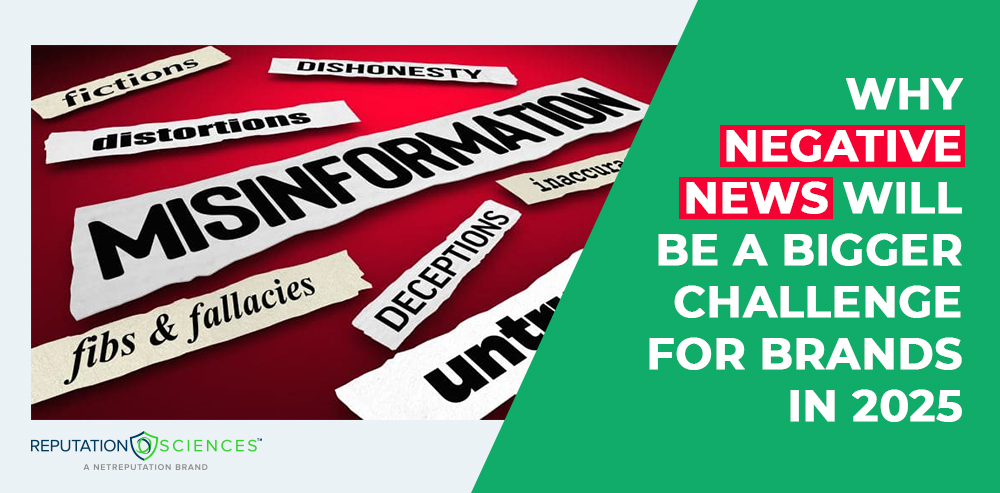Why Negative News Will Be a Bigger Challenge for Brands in 2025

The way people consume news has changed drastically in the past decade, driven by the rise of social media platforms, the decline of traditional news outlets, and the growing influence of user-generated content. In this dynamic environment, the news media landscape has become a battleground for attention, often skewed by negativity bias and amplified by social media algorithms.
Brands are no longer just passive observers but active participants in this new reality. Negative news, whether it involves a bad review or a viral controversy, can have adverse consequences for their reputation. At the same time, sharing positive or neutral news has become a vital strategy for preserving trust. As 2025 approaches, brands must understand the challenges of this evolving media ecosystem and prepare to adapt.
The Evolution of News Consumption
News consumption has undergone a seismic shift, largely due to the proliferation of digital devices and the growing dominance of social media platforms like Facebook, TikTok, and Instagram. A Pew Research Center study showed that many news consumers now prioritize convenience and immediacy over depth, often relying on short posts and emotionally charged headlines.
The Downward Trend of Trust in News Media
Negative news stories dominate news sources, as negativity bias ensures that bad news spreads faster and resonates more deeply with audiences. Journalists, pressured to produce attention-grabbing content, often focus on stories that provoke anxiety, anger, or fear. This emphasis on negative emotional content has contributed to declining trust in news outlets.
Research suggests that this shift has created a fragmented audience. People tend to consume news that aligns with their position on the political spectrum, reinforcing pre-existing biases. Prominent politicians and influential media sources often amplify this divide, further polarizing the conversation.
Social Media’s Role in News Distribution
Social media platforms have become the primary news source for many users, fundamentally changing how information is shared and consumed. Unlike traditional newspapers, which often offer a balanced view, social media algorithms prioritize engagement, pushing sensationalized news articles to the top of users’ feeds.
How Social Media Algorithms Amplify Negative Content
Negative news stories tend to attract more clicks, shares, and comments, creating a feedback loop where negative information is disproportionately amplified. For brands, this means that a single piece of bad news or negative language in a post can quickly go viral, potentially resulting in long-term damage to their reputation.
The Rise of User-Generated Content
User-generated content (UGC) has added another layer of complexity. While UGC can provide positive information and authenticity, it can also introduce challenges. A critical video or post from a dissatisfied customer can reach thousands—or even millions—of people in moments.
Brands like Nike and GoPro have successfully harnessed UGC to share positive stories, showcasing customer experiences and fostering community engagement. However, this strategy requires constant vigilance to promptly address negative posts.
The Impact of Negative News on Brands
1. Adverse Consequences on Reputation
Negative news stories can have immediate and long-term effects on a brand’s reputation. When news consumers encounter negative content about a brand, it often influences their perception, even if the information lacks truth or context. Sentiment analysis indicates that exposure to negative tones and headlines can diminish audience trust and loyalty.
2. Mental Health and Audience Reactions
The saturation of bad news doesn’t just affect brands—it impacts consumers’ mental health, fostering anxiety and fear. People feel overwhelmed by the volume of negative emotional content they encounter daily. This constant exposure can influence how audiences engage with brands, with many becoming more skeptical of corporate messaging.
3. Influence on Sales and Consumer Behavior
Negative information tends to linger in the minds of consumers, affecting their purchasing decisions. A single negative article or viral post can lead to a downward trend in sales, particularly when amplified by media sources and social media platforms.
Preparing for the Challenges of 2025
To navigate the evolving media landscape, brands must adopt proactive strategies that address both the risks and opportunities presented by digital media.
1. Monitor and Analyze Sentiment
Using sentiment analysis tools, brands can track how their audience feels about news content related to their products or services. This enables them to respond to negative news stories in real-time, addressing misinformation and mitigating potential damage.
2. Share Positive or Neutral News
Balancing negative information with positive news is essential. Highlighting community initiatives, customer success stories, or innovative products can create a more balanced view of the brand. Sharing positive or neutral news reinforces trust and counters negativity bias.
3. Leverage User-Generated Content
Encourage users to share authentic stories that align with the brand’s values. Positive posts from real customers can serve as powerful testimonials, helping to offset the impact of negative language or reviews.
4. Prioritize Transparency and Accountability
Brands must adopt a transparent approach to communication. Whether responding to a crisis or clarifying misleading headlines, honesty and accountability foster long-term trust.
5. Utilize AI to Combat Misinformation
Artificial intelligence can play a pivotal role in detecting and countering the spread of misinformation. AI tools can monitor social media algorithms, analyze trends, and identify false claims before they escalate.
Building a Resilient Brand Reputation
In a world where negative news spreads faster than ever, brands must focus on building resilience. This means investing in community engagement, creating a balanced narrative, and consistently reinforcing trust. By addressing negative news stories head-on and sharing positive information, brands can navigate the complexities of the news media landscape and thrive in 2025.
